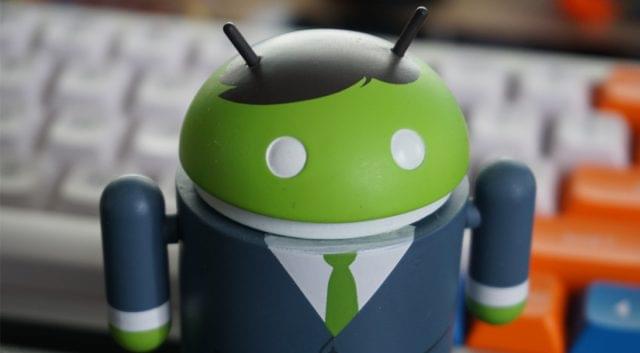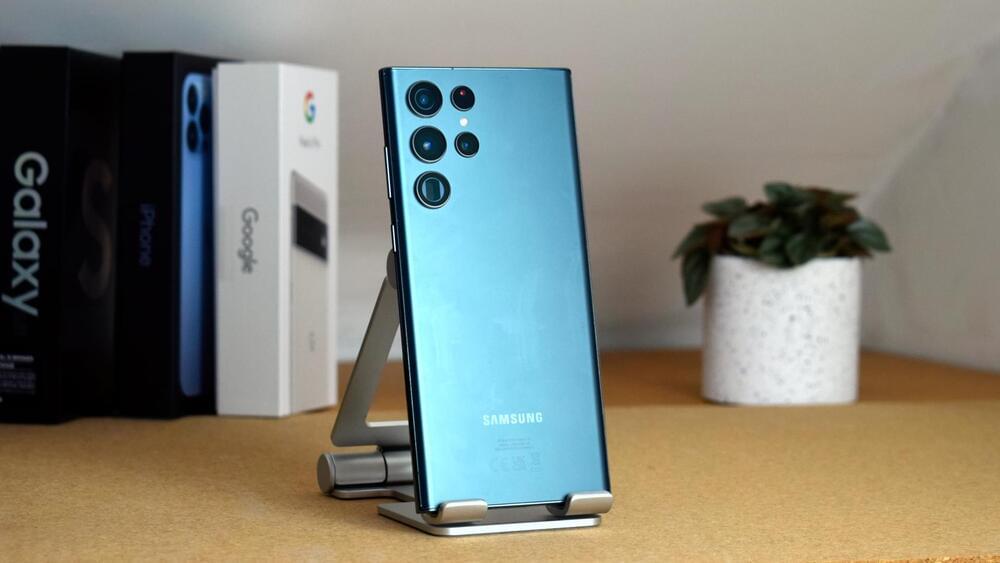Google rolled out patches for the flaws in a December security update, so Android users should make sure they’ve updated their mobile OSes.



Way back in 2015, Apple released its very first app in the Google Play Store. It was called Move to iOS, and it helped people switch from Google’s platform to Apple’s. Turnabout is fair play, and Google has finally made its own switching app. With the predictable name “Switch To Android,” the app helps iPhone owners export their data for use on an Android phone. The app rolled out today in several markets, including the US, but it might be hard to find.
The current mobile dichotomy has been in place for over a decade at this point. Upstarts like Palm and Windows Phone tried and failed to create a third platform, but instead we’ve all become more entrenched with Android and iOS. After years and years using one platform, it can be imposing to move it someplace else. Apps like Apple’s Move to iOS and the new Switch To Android can make it a bit easier by automating the process, or at least pointing you to the right settings.
After installing the Switch To Android app on an iPhone, you’ll have the option to grab the basics like your contacts, calendar events, photos, and videos. Most of this data should plug into Google’s ecosystem without issue. You might notice some strange errors in contact data, but the app connects to Google Photos to salvage all your iCloud media. This all happens wirelessly, so you won’t have to worry about finding a cable to connect your Android phone’s USB-C port to the aging Lightning port on even the latest iPhones.

In the future, smart clothing might monitor our posture, communicate with smartphones and manage our body temperature. But first, scientists need to find a way to cost-effectively print intricate, flexible and durable circuits onto a variety of fabrics. Now, researchers reporting in ACS Applied Materials & Interfaces have developed a conductive 3D printing ink made of liquid metal droplets coated with alginate, a polymer derived from algae.
Conventional electronics are rigid and unable to withstand the twisting and stretching motions that clothing undergoes during typical daily activities. Because of their fluid nature and excellent conductivity, gallium-based liquid metals (LMs) are promising materials for flexible electronics. However, LMs don’t stick well to fabrics, and their large surface tension causes them to ball up during 3D printing, rather than form continuous circuits. Yong He and colleagues wanted to develop a new type of conductive ink that could be 3D printed directly onto clothing in complex patterns.
To make their ink, the researchers mixed LM and alginate. Stirring the solution and removing the excess liquid resulted in LM microdroplets coated with an alginate microgel shell. The ink was very thick until it was squeezed through a nozzle for 3D printing, which broke hydrogen bonds in the microgel and made it more fluid. Once the ink reached the fabric surface, the hydrogen bonds reformed, causing the printed pattern to maintain its shape. The team 3D printed the new ink onto a variety of surfaces, including paper, polyester fabrics, nonwoven fabrics and acrylic-based tape. Although the printed patterns were not initially conductive, the researchers activated them by stretching, pressing or freezing, which ruptured the dried alginate networks to connect the LM microdroplets.

Researchers used radiative cooling to generate enough to power LEDs or charge a cell phone.
NASA has agreed to test startup SpinLaunch’s kinetic launcher, a giant circular accelerator that aims to shoot 200 kilogram satellites into space.
The California-based SpinLaunch’s launcher is located at the Spaceport America facility in New Mexico where it will carry out a test flight with NASA later this year, according to the firm.

MILLIONS of owners of the Samsung Galaxy smartphone face a security threat.
Those with an Android version 9 through 12 are at risk.
Researchers at Kryptowire published a report detailing how they discovered a serious vulnerability in the pre-installed Phone app across multiple models that could enable a hacker to take control of someone’s phone, Forbes reported.

Say cheese! Researchers have developed a tiny camera that takes amazingly clear photos. Just don’t sneeze while it’s in your hand. At the size of a coarse grain of salt, you may never find it again.
Smaller cameras could mean lighter smartphones and new James Bond–style gadgets. But that’s not all. Cameras on this scale could swim through the body, hitch a ride on an insect, scope out your brain or monitor hostile environments. And those are just a few of the possibilities.
How do you pack that much picture-taking power into something the size of a crumb? It takes a “radically different approach” to making a camera lens, says Felix Heide. He’s a computer scientist at Princeton University in New Jersey. His lab developed the camera with colleagues from the University of Washington in Seattle. The team shared its work in Nature Communications in November.

Remember He Jiankui, the Chinese scientist who shocked the world when it emerged in late 2018 that he had used CRISPR to tinker with the genetic code of IVF embryos, leading to the birth of twins who are likely the world’s first genetically modified humans?
The news led to a broad outcry among scientists, ethicists and regulators, not the least because experts in the field later found the experiment to be tainted by “egregious scientific and ethical lapses.”
Long story shot, China ended up imprisoning He, who also lost his research position at the Southern University of Science and Technology in China — but now MIT Technology Review, which first broke the news of the experiment back in 2018, reports that he’s out of prison and even answered his cell phone for a brief call.

Standard image sensors, like the billion or so already installed in practically every smartphone in use today, capture light intensity and color. Relying on common, off-the-shelf sensor technology—known as CMOS—these cameras have grown smaller and more powerful by the year and now offer tens-of-megapixels resolution. But they’ve still seen in only two dimensions, capturing images that are flat, like a drawing—until now.
Researchers at Stanford University have created a new approach that allows standard image sensors to see light in three dimensions. That is, these common cameras could soon be used to measure the distance to objects.
The engineering possibilities are dramatic. Measuring distance between objects with light is currently possible only with specialized and expensive lidar —short for “light detection and ranging”—systems. If you’ve seen a self-driving car tooling around, you can spot it right off by the hunchback of technology mounted to the roof. Most of that gear is the car’s lidar crash-avoidance system, which uses lasers to determine distances between objects.

Mojo Vision said it has created a new prototype of its Mojo Lens augmented reality contact lenses. This smart contact lens will bring “invisible computing” to life, the company believes.
The Mojo Lens prototype is a critical milestone for the company in its development, testing, and validation process, and is an innovation positioned at the intersection of smartphones, augmented reality/virtual reality, smart wearables, and health tech.
The prototype includes numerous new hardware features and technologies embedded directly into the lens — advancing its display, communications, eye tracking, and power system.